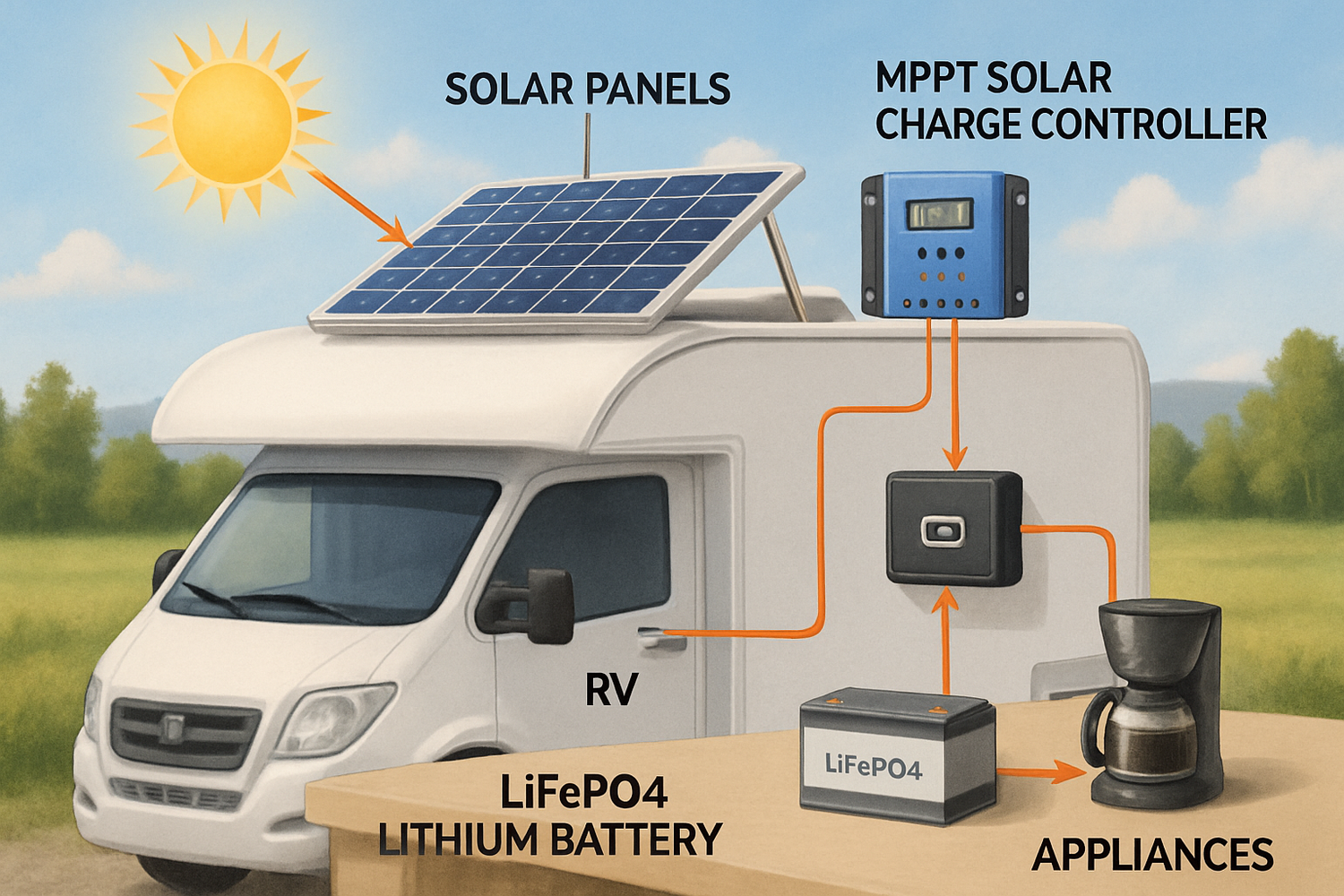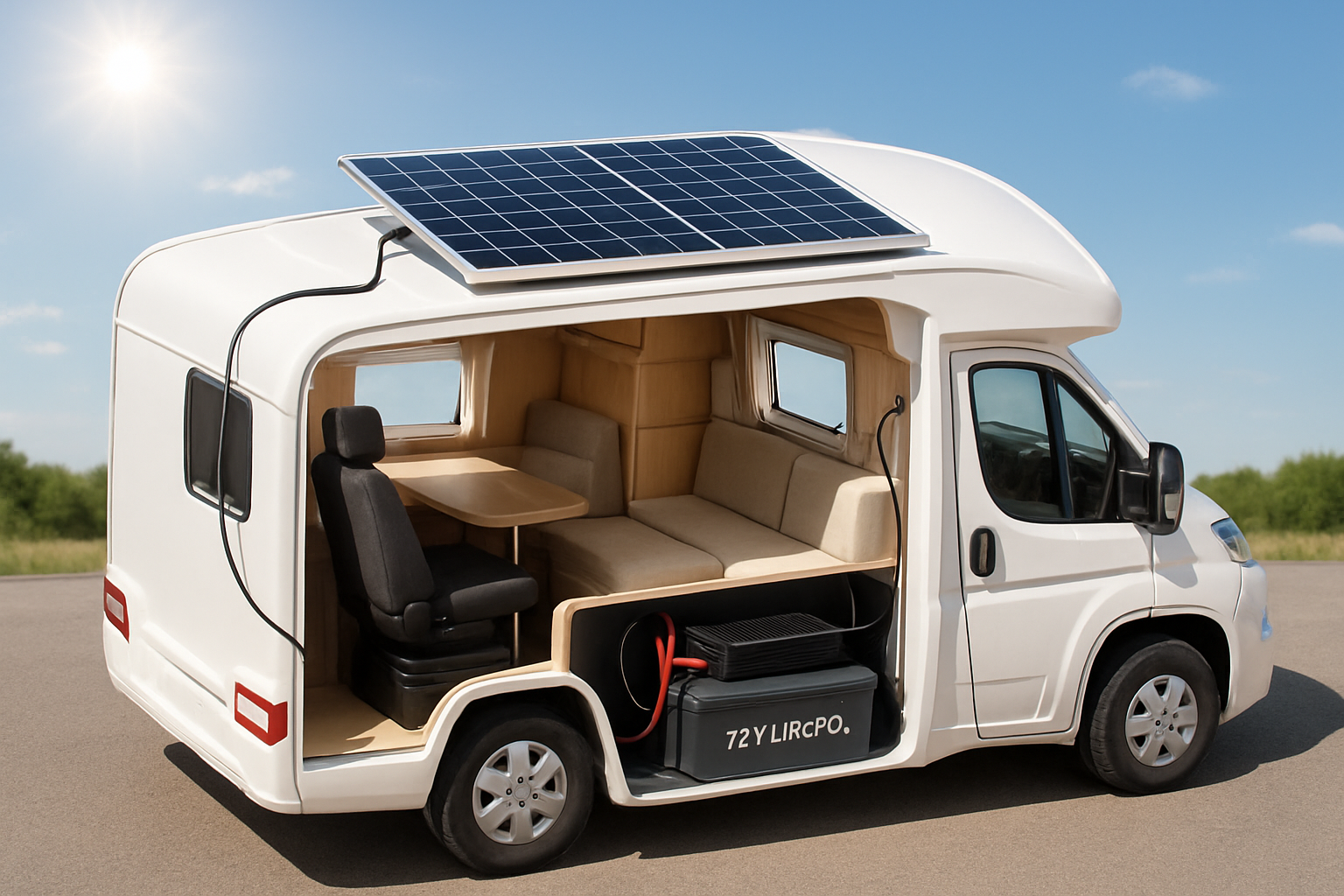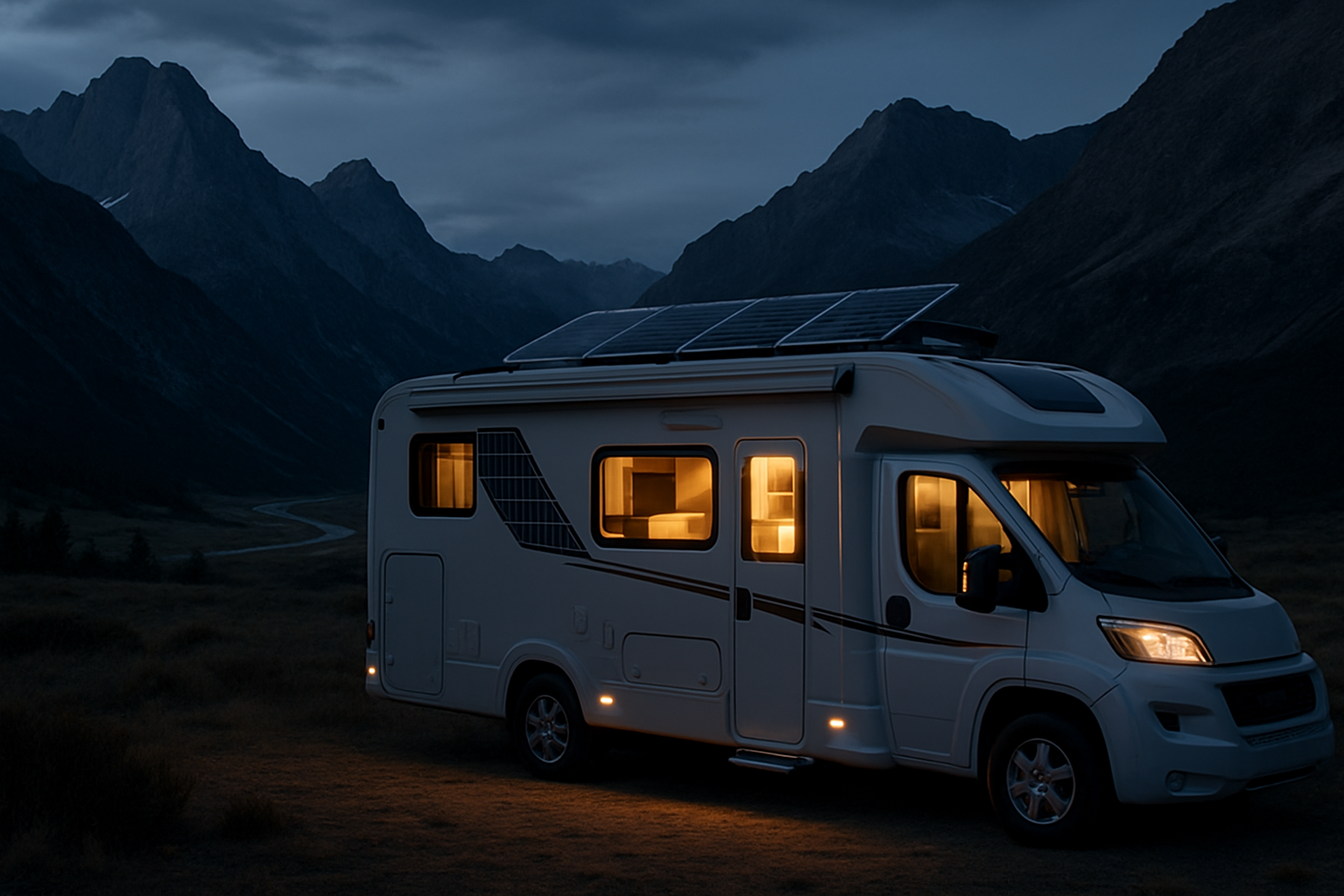You invested in an RV solar system and a powerful lithium battery to enjoy the freedom of the open road. But are you capturing and storing every possible watt of energy from the sun? Many RV owners unknowingly leave power on the table due to system inefficiencies. This lost energy translates to shorter off-grid stays and more reliance on noisy generators. The key isn't just about having solar panels; it's about creating a highly efficient pathway from the sun to your appliances. This article provides practical strategies to fine-tune your setup, ensuring you maximize your RV lithium battery storage and stop wasting valuable solar power.
Understanding the Flow of Solar Energy in Your RV
To optimize your system, you first need to understand how power moves through it. The journey from sunlight to usable electricity involves several key components, and energy can be lost at each step if things aren't configured correctly.
From Panel to Battery: The Charging Pathway
Solar energy begins its journey at your solar panels, which convert sunlight into direct current (DC) electricity. This power then travels to a solar charge controller, the brain of your system. The charge controller regulates the voltage and current sent to your RV lithium battery, protecting it from overcharging. Finally, the battery stores this energy until you need it. An inverter then converts the battery's DC power to alternating current (AC) for household appliances.
Why Lithium (LiFePO4) Batteries Excel at Storage
Lithium iron phosphate (LiFePO4) batteries have a significant advantage in solar applications due to their high round-trip efficiency, often exceeding 95%. This means very little energy is lost during the charging and discharging process. However, this inherent efficiency can be undermined by other, weaker links in your system. While the battery itself is efficient, the components feeding it may not be, leading to wasted solar potential.
Identifying Common Points of Energy Loss
Energy waste in an RV solar system often comes from a few common culprits. Undersized wiring creates resistance, turning precious power into heat. Incorrect charge controller settings can fail to fully charge your battery or charge it too slowly. Environmental factors like shade and dirty panels can drastically reduce your solar array's output before the energy even enters your RV.
The Charge Controller: Your System's Brain
The solar charge controller is arguably the most critical component for solar charging optimization. Choosing the right type and configuring it properly for your lithium battery is essential for maximizing power harvest and battery longevity.
MPPT vs. PWM: A Critical Choice for Efficiency
There are two primary types of solar charge controllers: Pulse Width Modulation (PWM) and Maximum Power Point Tracking (MPPT). While PWM controllers are less expensive, MPPT controllers are significantly more efficient. An MPPT controller can increase your solar harvest by up to 30%, especially in cold weather or when panel voltage is much higher than battery voltage. As noted in research on power optimization technologies, controlling each string of panels can maximize power output. According to the U.S. Department of Energy, this approach improves fault tolerance and overall system performance. EERE Success Story—How Power Optimization Technology Research Built a Successful U.S. Business. This makes an MPPT controller a vital investment for serious solar charging optimization.
Configuring Settings for LiFePO4 Batteries
Unlike traditional lead-acid batteries, LiFePO4 batteries require very specific charging parameters. Using default or lead-acid settings on your charge controller will result in undercharging and poor performance. It is crucial to set the correct bulk, absorption, and float voltages as specified by your battery manufacturer. Equalization charging, a process used for lead-acid batteries, should always be turned off for lithium batteries as it can cause permanent damage.
| Parameter | Recommended Setting for 12V LiFePO4 | Reason |
|---|---|---|
| Bulk/Absorption Voltage | 14.2V - 14.6V | Ensures a full and rapid charge. |
| Absorption Time | 15-30 minutes per 100Ah | Lithium absorbs charge quickly; long times are not needed. |
| Float Voltage | 13.5V - 13.8V (or Off) | Maintains charge without stressing the cells. Many installers disable float entirely. |
| Equalization | Disabled | This process is harmful to LiFePO4 battery chemistry. |
The Importance of Temperature Management
LiFePO4 batteries are sensitive to temperature. Most cannot be charged below freezing (0°C or 32°F) without risking damage. A quality charge controller with a temperature sensor connected to the battery will automatically halt charging in freezing conditions. Unlike lead-acid batteries, they do not require voltage adjustments for temperature changes, but protecting them from extreme temperatures is key to their health and efficiency.
System-Wide Enhancements for Maximum Solar Gain
Beyond the charge controller, several other system-level adjustments can help you capture every available watt. These enhancements focus on improving the physical pathways and monitoring capabilities of your setup.
Wire Sizing and Voltage Drop
Voltage drop is a silent killer of solar efficiency. If the wires connecting your solar panels to your charge controller or your controller to your battery are too small, you will lose energy as heat. A voltage drop of more than 2-3% is a sign that your wires are undersized. Using a wire gauge calculator and investing in thick, high-quality copper wiring is a simple way to ensure that the power your panels produce actually makes it to your battery.
Panel Placement and Maintenance
The output of your solar panels is directly affected by their condition and orientation. Even partial shading on a single panel can significantly reduce the output of your entire array. Keeping your panels clean from dust, pollen, and road grime can boost performance by 5-20%. If possible, tilting your panels towards the sun, especially during winter months, can also provide a substantial increase in energy production.
Integrating a Shunt-Based Battery Monitor
Your battery's built-in voltage reading is an unreliable indicator of its state of charge. A shunt-based battery monitor, which measures the actual energy flowing in and out of your battery, is the only way to get an accurate reading. This precision allows you to understand your true power consumption and available capacity, helping you make smarter energy decisions and avoid unnecessary generator use.
Advanced Strategies for Power Management
Optimizing your hardware is only half the battle. Adjusting your energy usage habits can make a massive difference in your system's overall efficiency and your ability to remain off-grid.
Aligning Power Usage with Peak Sun Hours
Run your high-draw appliances, such as a microwave, coffee maker, or air conditioner, during the middle of the day (typically 11 AM to 3 PM). During these peak sun hours, your solar array is producing its maximum output. By using this power directly, you allow any excess to be stored in your battery. The International Renewable Energy Agency (IRENA) highlights that electricity storage is a key solution for managing variable renewable energy sources like solar. Electricity Storage Valuation Framework. This strategy minimizes battery drain and ensures it is fully charged by sunset.
Understanding and Eliminating Parasitic Loads
Parasitic loads are devices that draw small amounts of power continuously, even when they appear to be off. These 'vampire' loads include appliance clocks, TV standby lights, and USB chargers. Over 24 hours, these small draws can add up to a significant amount of wasted energy. Installing kill switches or simply unplugging these devices when not in use can conserve precious battery power.
The Role of DC-DC Converters for On-the-Go Charging
If you travel frequently, a DC-DC charger is an excellent addition. This device takes power from your vehicle's alternator and optimizes it for your LiFePO4 house battery. It ensures a stable, multi-stage charge while you drive, protecting both your alternator and your battery investment. This allows you to arrive at your campsite with a fully charged battery, independent of the sun's availability. A comprehensive view of system components is vital for achieving peak performance, as detailed in this ultimate reference for solar storage performance, which covers how different elements contribute to overall efficiency.
Putting It All Together
Optimizing your RV's lithium battery storage is not about a single fix but a holistic approach. By selecting an efficient MPPT charge controller, programming it correctly for your LiFePO4 battery, using adequately sized wires, and managing your power consumption intelligently, you transform your RV into a highly efficient energy system. These adjustments ensure that the solar energy you collect is effectively stored and ready when you need it, extending your freedom and comfort on the road. The goal of energy storage is to shift electricity to periods of higher demand, a principle that applies to large grids and individual RVs alike. Renewable Power Generation Costs in 2024.
Disclaimer: The information provided is for educational purposes. Always consult with a qualified professional for specific advice regarding your RV's electrical system.
Frequently Asked Questions
Can I mix different types of solar panels?
It is not recommended to mix solar panels with different voltage or wattage ratings. Doing so can limit the output of your entire array to the level of the lowest-performing panel, creating a significant inefficiency in your solar charging optimization.
Why is my lithium battery not charging to 100%?
This is often caused by incorrect solar charge controller settings. Verify that the absorption voltage is set between 14.2V and 14.6V and that the absorption time is sufficient. It could also indicate that your battery monitor needs to be recalibrated to accurately reflect the battery's state of charge.
How much solar power am I losing with dirty panels?
The energy loss from dirty panels can be surprisingly high, ranging from 5% in a light haze to over 25% in very dusty or grimy conditions. Regular cleaning is one of the easiest and most effective ways to boost your battery storage efficiency.





Leave a comment
All comments are moderated before being published.
This site is protected by hCaptcha and the hCaptcha Privacy Policy and Terms of Service apply.